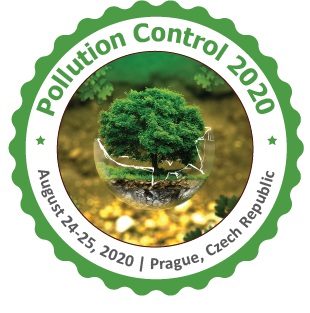
Issaka sam Suraj
Graduate school of Nuclear and Allied Sciences, University of Ghana,Ghana
Title: Pesticides exposure and risk assessments in drinking water in the Kadjebi District of Ghana
Biography
Biography: Issaka sam Suraj
Abstract
The Kadjebi district is predominantly made up of farming communities, hence, the major economic activities is crop production.. The extensive use of organochlorines, organophosphate and synthetic pyrethroids have raised concerns about potential adverse effect on human health and the environment. The study assessed the risk associated with the use of pesticide contaminated drinking water in the Kadjebi District of the Volta Region of Ghana. Hundred and nine (109) and twenty six (26) questionnaires were administered to farmers and agrochemical sellers respectively to assess awareness and knowledge about the use of the agrochemical. Thirty nine (39) water and sediments samples were collected. Extractions of samples were done and GC-MS techniques were used to analyze the samples. Risk assessment was done using United States Environmental Protection Agency’s Guidelines (USEPA, 1996). Results of the study revealed that about 92.6% of farmers used one or more pesticides. Of these numbers, 62% admitted not having access to services of the extension officers on the use and application of pesticides, 18% of the farmers reported positively to the use of protective gears to cover the whole body during pesticide application while 45% do not use any protective gear. 68% of the respondents reported clinical symptoms of pesticide poisoning such as nausea, headache, blurred vision, eye irritation, dizziness, vomiting and skin irritation. About 51% of water samples analyzed showed positive detections of pesticide residues while all sediments samples showed positive detections of pesticides residues varying from one to five different types of pesticides residues. The common pesticides residues found in the samples were Deltamethrine, Cyfluthrin, Cypermethrin, Dieldrin, Fenvaerate, Lambda-cyhal, p,p’ DDT. Synthetic pyrethroids (72%) were the dominant residues detected. Deltamethrine, Cyfluthrin, Cypermethrin, Dieldrin, Fenvaerate, were found in the sediments with concentration range of 0.001 mg/kg to 0.014 mg/kg. Deltamethrine, Cyfluthrin, Cypermethrin, Dieldrin and p,p’ DDT were detected in the surface water with concentration which varied from 0.001 μg/L to 0.007 μg/L. From the calculated hazard indices, there is no adverse health risk associated with the consumption of the water in both children and the adult. There should be advocacy and awareness creation on the safety and toxicity of pesticides and assessment of other consumable receptors of pesticides residues.

